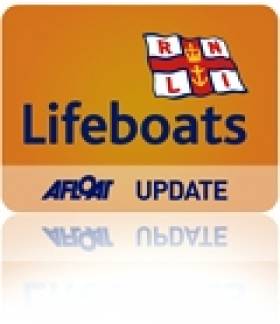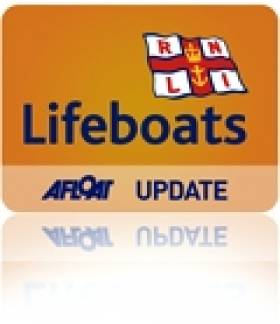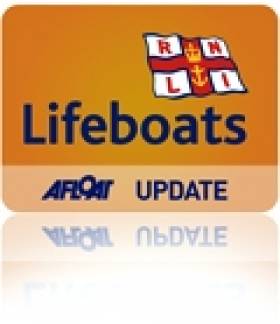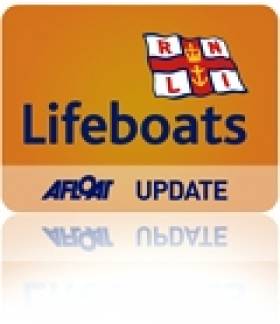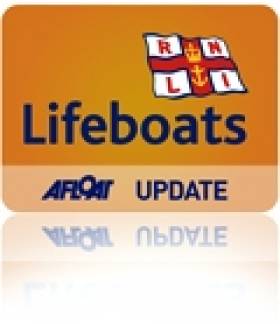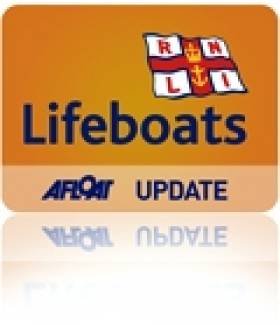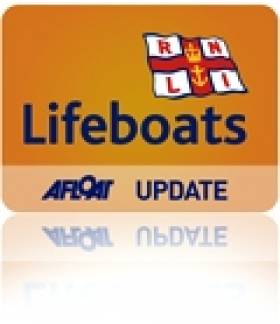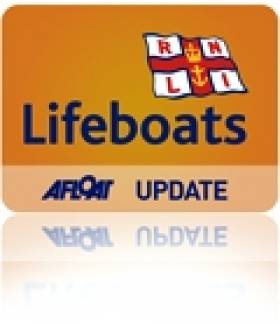Displaying items by tag: Lifeboat
Dublin Boat Show Goes Afloat
The 2011 Dublin Boat Show is going on the water in 2011 if a new approach to promote boating in Ireland takes off. The Irish Marine Federation (IMF) aims to include as many boating activities as possible in the national boat show line up next May in Malahide.
An attendance of up to 17,000 are expected at the Malahide marina venue from May 20 to 22. It will be the first time the national event has taken to the water in its 50 year history.
The world's biggest boat builders Beneteau, Jeanneau, Sea Ray and Sunseeker among others have already signed up for the North Dublin event, according to the IMF.
The organisers are partnering with leading Irish boating organisations to demonstrate the many different aspects of the sport on the water with a weekend schedule of live commentary.
BJ Marine, MGM Boats, Western Marine, HM Yachts in Cork and Viking marine of Dun Laoghaire and Shannon Castle Line in County Clare are among the first of the Irish firms to express interest in the new format as exhibition details circulate through the industry this week.
The aim is to get as many class associations on the water as well as small powerboat racing such as Zzapcats, kayaking and match racing fans to stage short, sharp events on the estuary directly in front of the marina. A timetable of events will be published shortly.
Coastguard and Lifeboat demonstrations are also planned. Technical demonstrations such as glass fibre repairs and engine maintenance are also in the line up.
Despite the coastal setting Ireland's Inland waters will feature prominently too through the Irish Boat Rental Association who will be promoting holidays on the river Shannon and Erne.
Visitors are also expected from Wales and across the Irish Sea region and special offers to both show-goers and exhibitors are being made through an Irish Sea InterReg programme.
The Malahide exhibition site will feature a marine village ashore with over 500 square meters of undercover exhibit space. Show goers will get the chance to talk to the leading lights in the sport before going afloat on the marina where over 100 berths will be available.
"It's a pretty unique site that gives us the best chance to show off the marine leisure industry afloat and ashore. Because its just off the M50 and M1 motorways it means it's also so easy to get to from anywhere in the country. This will be a great day out." said the Federation's Steve Conlon.
More information from Steve Conlon on 087 6472746. Updates here on afloat.ie as the show takes shape.
The Tamar Arrives!... At Kilmore Quay
The lifeboat was funded by a legacy from Mrs Mary Weeks from Surrey in England who passed away in 2006. Mrs Weeks met her husband while on a cruise off the west coast of Scotland on a boat named Killarney.

The RNLB Killarney on her maiden arrival yesterday to Kilmore Quay, Co. Wexford.
She also has a strong RNLI connection through her maiden name Distin. Mrs Weeks was related to the Coxswain of Salcombe lifeboat Samuel Distin and to Albert Distin. Both men lost their lives in the Salcombe lifeboat disaster of 1916.
The lifeboat hull was moulded by the RNLI and fitted out in Plymouth under RNLI supervision. Lifeboat crewmembers based in Kilmore Quay have undertaken comprehensive training at the lifeboat college in Poole and onboard the Tamar class lifeboat in preparation for their new arrival.
The new lifeboat is not expected to go on service until later in the month and the next few weeks will be spent training the rest of the lifeboat crew on the new boat. RNLI Deputy Divisional Inspector Gareth Morrison said, " This is a huge day for the RNLI in Ireland. The arrival of any lifeboat is a great celebration for a community but when it is the first of a new class of lifeboat the excitement is even greater.
The Kilmore Quay lifeboat crew have been looking forward to this day for a long time. Their last lifeboat the Famous Grouse rescued over 300 people since 2004 and this lifeboat station has had many challenging rescues in its history. I wish them the very best of luck with their new lifeboat, may she have many successful years ahead of her." Kilmore Quay lifeboat Coxswain Eugene Kehoe added, "It's a proud day for Kilmore Quay.

The crew of the RNLB Killarney
A new lifeboat is a tremendous gift and we will take very good care of it. We are very grateful to the donor who by leaving this legacy to the RNLI has provided a lifeboat that will go on to save many lives at sea.
On a bad night miles out to sea it is good to know that we have a state of the art lifeboat and a highly trained lifeboat crew to respond to every situation." The new Tamar class lifeboat is 16.3 metres in length with a maximum speed of 25 knots compared to the 14.3 metres of the current Tyne class lifeboat stationed at Kilmore Quay, which has a maximum speed of 18 knots.
The lifeboat is self-righting and is fitted with an integrated electronics Systems and Information Management System, which allows the lifeboat crew to monitor, operate and control many of the boats systems from shock mitigating seats. The Tamar also carries a Y boat (an inflatable daughter boat) which is housed under the aft deck and deployed from a hinged door in the transom. The lifeboat has room for 44 survivors. It will replace the current Kilmore Quay Tyne class lifeboat The Famous Grouse, which will be retired to the RNLI relief lifeboat fleet.
Related Safety posts
RNLI Lifeboats in Ireland
Safety News
Rescue News from RNLI Lifeboats in Ireland
Coast Guard News from Ireland
Water Safety News from Ireland
Marine Casualty Investigation Board News
Marine Warnings
Man Rescued after Fall from Boat in Ballyshannon
The use of the kill chord and a lifejacket on a boat in Donegal this week meant a man who went over board was able to be rescued quickly by Bundoran Lifeboat
The RNLI was alerted to a person in the water off Creevy Pier in Ballyshannon, Co. Donegal.
The casualty had been thrown from his boat when the steering wheel broke.
He was spotted by two local fishermen who raised the alarm with the Coastguard.
On arrival the local fishermen had retrieved the man from the water. The Lifeboat crew took the casualty onboard and landed him at Creevy where they administered first aid to him.
He was then taken to Sligo General Hospital by ambulance. The rescue helicopter 118 was also on scene and the rescue was coordinated by Malin Head Coastguard.
Speaking after the rescue, Colm Hamrogue, Press Officer for Bundoran Lifeboat commented; "The gentleman was very lucky to be spotted by the local fishermen who raised the alarm. He was wearing his life jacket and had an emergency kill switch on the engine of his boat which went a long way in saving his life.
"He is expected to make a full recovery and I would like to commend the gentleman who was rescued for following sea safety advice by wearing a life jacket and having the necessary emergency kill switch. I would also like to praise the local fishermen for their vital role in this rescue."
Related Safety posts
RNLI Lifeboats in Ireland
Safety News
Rescue News from RNLI Lifeboats in Ireland
Coast Guard News from Ireland
Water Safety News from Ireland
Marine Casualty Investigation Board News
Marine Warnings
Ballycotton Lifeboat Rescues Fishing Vessel
Ballycotton lifeboat was launched last night, 11 October, to a fishing vessel with a fouled propeller, near rocks off Ballycroneen Bay, east of Cork Harbour. The boat's skipper put out an anchor and contacted the owner, who in turn contacted the lifeboat station. Ballycotton lifeboat was launched at 19:55 and arrived on-scene at 20:15. They pulled the fishing vessel away from the rocks and any possible fishing gear that was in the area. A tow line was established and the fishing vessel was towed into Ballycotton harbour, arriving at 21:20.
Related Safety posts
RNLI Lifeboats in Ireland
Safety News
Rescue News from RNLI Lifeboats in Ireland
Coast Guard News from Ireland
Water Safety News from Ireland
Marine Casualty Investigation Board News
Marine Warnings
First 'Tamar' Lifeboat Arrives at Kilmore Quay on Wednesday
The RNLI's new Tamar class all weather lifeboat will arrive at Kilmore Quay in County Wexford next Wednesday (13 October 2010) at 5pm. This €3 million lifeboat will be the first of its class to be based at an Irish lifeboat station. It is the most modern and technically advanced lifeboat in the RNLI fleet.
The new lifeboat, which is to be named Killarney, will undertake a five day passage from Poole in England, calling at lifeboat stations at the Channel Islands, Fowey, Padstow and Fishguard before arriving it its new home at the RNLI Kilmore Quay lifeboat station next Wednesday.
The lifeboat hull was moulded by the RNLI and fitted out in Plymouth under RNLI supervision. Lifeboat crewmembers based in Kilmore Quay have undertaken comprehensive training at the lifeboat college in Poole and on passage onboard the Tamar class lifeboat in preparation for their new arrival.
The new Tamar class lifeboat is 16.3 metres in length with a maximum speed of 25 knots compared to the 14.3 metres of the current Tyne class lifeboat stationed at Kilmore Quay, which has a maximum speed of 18 knots. The lifeboat is self-righting and is fitted with an integrated electronics Systems and Information Management System, which allows the lifeboat crew to monitor, operate and control many of the boats systems from shock mitigating seats.
The Tamar also carries a Y boat (an inflatable daughter boat) which is housed under the aft deck and deployed from a hinged door in the transom. The lifeboat has room for 44 survivors. It will replace the current Kilmore Quay Tyne class lifeboat The Famous Grouse, which will be retired to the RNLI relief lifeboat fleet. The €3 million lifeboat has been funded from a legacy.
All are welcome to attend. The RNLI is inviting everyone interested to see the new lifeboat's arrival into Kilmore Quay Harbour to be in place before 5pm.
Tamar Arrival in Ireland
Event: First Tamar class lifeboat in Ireland to arrive at Kilmore Quay RNLI Lifeboat Station in County Wexford
Date: Wednesday 13 October 2010Time: 5pm at Kilmore Quay harbour in County Wexford
Related Safety posts
RNLI Lifeboats in Ireland
Safety News
Rescue News from RNLI Lifeboats in Ireland
Coast Guard News from Ireland
Water Safety News from Ireland
Marine Casualty Investigation Board News
Marine Warnings
Two Men Die in Inishbofin Boating Accident
Two men died in a boating accident off the coast of Inishbofin in Co. Galway early this morning.
The pair, aged in their late 50's and early 60's had arrived on the island yesterday on a 40ft motor cruiser and it is understood, through local lifeboat sources, the accident appears to have happened as the two men returned to the cruiser by dinghy on Saturday night.
Both men were wearing lifejackets.
One of the bodies was washed ashore, while another was located inside the upturned dinghy around 11 o'clock this morning.
The bodies were airlifted by the Sligo-based Coastguard helicopter to Galway University Hospital.
Post-mortem examinations will be carried out to determine the exact cause of death.
Five Incidents in Four Days for Cork Harbour Lifeboat
Crosshaven Volunteer RNLI Lifeboat has had a very busy few days as they were tasked to five incidents in four days.
On Thursday evening at 17.59, the Lifeboat was tasked to the upper reaches of Cork Harbour near the city to check out an unidentifiable object in the water. On arrival, the object was found to be a large bag containing foam. Friday evening, saw the Lifeboat heading up the Owenabue River to rescue two punts which had been floated off on the very high Spring tides and were perceived a danger to shipping.
Saturday evening at 20.34, the Lifeboat was again tasked to the North side of Great Island where a 55' Motor Launch with 3 persons on board had mechanical difficulties and drifting in high winds of force 7. On arrival at scene, the crew decided that because of the size and weight of the vessel and the high winds it was safer to anchor the vessel and take off the crew. They were safely landed at East Ferry Pier. As the Lifeboat was returning to Crosshaven, The Coastguard at Valentia again tasked the Lifeboat to search the area between Cobh and Monkstown for an overdue Rigid Inflatable Boat (RIB). After searching for a period, and with nothing found, the Coastguard stood down the volunteer Lifeboat crew to return to station.
Sunday afternoon, and the pagers were again activated at 16.33 to go to the aid of a small boat with engine problems at East Ferry. On arrival in the area, it was noticed that the casualty boat had managed to restart and head into East Ferry Marina.
Related Safety posts
RNLI Lifeboats in Ireland
Safety News
Rescue News from RNLI Lifeboats in Ireland
Coast Guard News from Ireland
Water Safety News from Ireland
Marine Casualty Investigation Board News
Marine Warnings
Galway Lifeboat Rescues Person Stranded near Hare Island
A member of the public rang the Irish Coastguard to report a person surrounded by water halfway across the causeway at approximately 3.10pm.
The Coastguard tasked Galway RNLI lifeboat, which launched within four minutes from Galway Docks. The lifeboat carried out a search of the area but did not find anyone in the water. The crew were informed a short time later that the person had made it safely ashore and did not require medical attention.
Galway's Lifeboat Operations Manager, Mike Swan, urges people to be careful when walking on or along the shore, as the tide can come in very fast:
"People may be aware of the tides but they are still getting caught out, particularly in Renmore at Ballyloughane Beach".
The volunteer lifeboat crew on this call-out were: Helmsman John Byrne, Martin Oliver and Keith Faller.
Related Safety posts
RNLI Lifeboats in Ireland
Safety News
Rescue News from RNLI Lifeboats in Ireland
Coast Guard News from Ireland
Water Safety News from Ireland
Marine Casualty Investigation Board News
Marine Warnings
Fenit RNLI to name new D Class Lifeboat after Bangor Couple
A special naming and dedication ceremony will be held this Saturday (25 September 2010) at 3.00pm when volunteer lifeboat crew and supporters with Fenit RNLI lifeboat station in Kerry will gather to name their new IB1 lifeboat Bradley and Sonya. The lifeboat is being named in memory of Bradley and Sonya Burns, who were volunteers with Bangor RNLI lifeboat crew and who tragically died within 10 months of each other in 2006.
The lifeboat has been funded through an appeal set up by Bangor RNLI, who felt that the most appropriate way to honour the couple was to purchase a lifeboat and name it after them. This lifeboat has now been put on service in Fenit, County Kerry. It will be named by Mrs Mary Connolly and Mrs Eileen Savage, the mothers of Sonya and Bradley and twenty- five members of Bangor lifeboat crew will travel down from Northern Ireland to attend the ceremony.
The cost of the new D class lifeboat is €39,000. This type of lifeboat is built for launching quickly and operating close to shore. It is five metres in length and can reach a maximum speed of 25 knots. It can take two or three lifeboat crew and has room for five survivors. It will join Fenit's all weather Trent class lifeboat.
Sonya's sister Judy Connolly and Bangor RNLI helm Kyle Marshall will deliver the lifeboat into the care of Fenit lifeboat station.
All are welcome to attend.
Related Safety posts
RNLI Lifeboats in Ireland
Safety News
Rescue News from RNLI Lifeboats in Ireland
Coast Guard News from Ireland
Water Safety News from Ireland
Marine Casualty Investigation Board News
Marine Warnings
Portrush Lifeboat Station Celebrates 150 years
A service of thanksgiving marked the start of a year of events to celebrate Portrush Lifeboat Station's 150 years of saving lives at sea. The volunteer lifeboat crewmembers, fundraisers and supporters held a service in Portrush with the Inshore Boat 'The Ken and Mary' making her last appearance as a Portrush Lifeboat.
The event was held exactly 150 years after Laura, the Countess of Antrim helped establish the Lifeboat Station on the North Coast.
The service started with James Heaney, Chairman of Portrush Lifeboat Station giving a brief history of the station. Michael Hassan and Shay Reynolds sang a song that Michael had composed for the station called 'You're never on your own' and Ballywillan Band played the crews favourite hymns. By coincidence the band unveiled their new crest which includes a rope ring, a nod to their close relationship with the lifeboat station.
.
Father Sheehan, Reverend Simpson, Pastor Todd and Rev Kirkpatrick all did readings and prayers reflecting the dedication of the volunteer crews to saving lives at sea. Karl O'Neill one of the youngest crew members read the 'Lifeboat Prayer'
After the service John D Coyle MEconSc Chairman RNLI Ireland Council handed over a vellum to Robin Cardwell, Lifeboat Operations Manager. Mr Coyle praised the work of the crews and teams attached to the station and congratulated everyone on reaching this milestone. He reflected on the advances in technology which has made the lifeboats ever more sophisticated, but how the RNLI still depend on volunteers to crew them.
Robin accepted the vellum and thanked everyone for attending especially crew families who wait at home when the crews are out at sea. He thanked the crews for their dedication and commitment to training both on station and at Poole. He said that the vellum would be hung with pride at the station. Coxswain Willie McAuley presented Mr Coyle with a signed book on the history of the station and Shelley Pinkerton, Chairman of the Fundraising Team, proposed the vote of thanks to Mr Coyle, and reminded everyone why fundraising was so important to the RNLI.
After the formal proceedings ended Limavady Big Band sound played a medley of swing sounds which entertained everyone while friends past and present reminisced.
Related Safety posts
RNLI Lifeboats in Ireland
Safety News
Rescue News from RNLI Lifeboats in Ireland
Coast Guard News from Ireland
Water Safety News from Ireland
Marine Casualty Investigation Board News
Marine Warnings



























